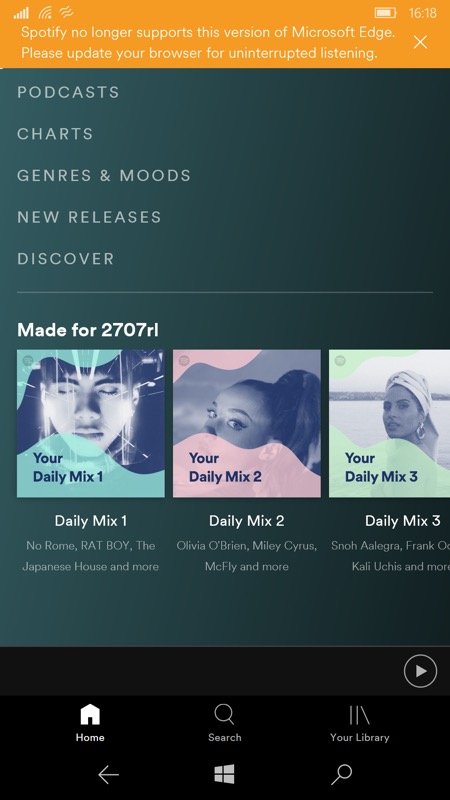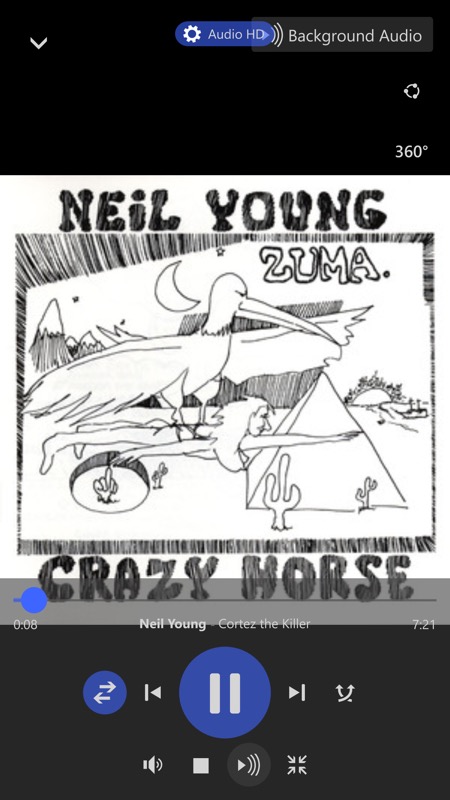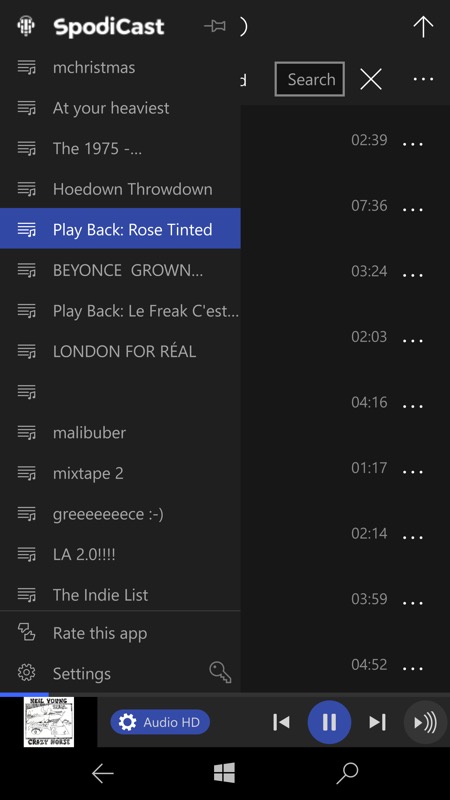The Spotify on Windows Phone story (including third party 'clients') is convoluted and long, so an AAWP coverage chronology would help here, I think:
- Nov 8th, 2011 - More musical options as Spotify reaches Windows Phone - Ewan reports on the Service hitting what was then Windows Phone 7.5/7.8
- Nov 11th, 2011 - Review: Spotify - Ewan reviews this first Windows Phone client
- Feb 8th, 2013 - Spotify arrives on Windows Phone 8 in beta - Microsoft's new platform gets an official Spotify build
- Jul 8th, 2013 - Spotify updated and comes out of beta - Out of beta and ready for Windows Phone 8.0 users
- Jan 19th, 2015 - Spotify's 2015 facelift - I write about Spotify 5.0 for Windows Phone 8.1
- Jun 21st 2017 - Spotify becomes a Windows 10 Store app, but you need Spoticast UWP - Spotify's leap into UWP appears only for the Desktop (because they just repackaged their Win32 client), so I start to recommend Spoticast instead
- Oct 9th 2018 - Spoticast for Spotify UWP - a year of updates - I round up updates to Spoticast, which is now very well-rounded
- Oct 16th 2018 - Spoticast Music UWP, the rebrand, now almost continuous... - the developer responds to AAWP with a big update
- Dec 5th 2018 - The lawyer-avoiding rebrand: Spodicast Music! - a change of name, but the software's still pretty great (if quirky for its sources!)
- Mar 12th 2019 - Unofficial Spotify player (Web wrapper) UWP - is (almost) brilliant - a new approach, piggy-backing on Spotify's Web support
So that's you up to date. Three options. There's the official Spotify client, nominally for Windows Phone 8.1, but which was still working for Windows 10 Mobile, there's the third party Spodicast client, which takes its search, track and playlist data from your Spotify account but which actually gets its audio from the same (usually) tracks on YouTube. And then there's the 'Web Wrapper' app approach.
The news here though is that these options are effectively down to one, as of now. Firstly, Spotify itself wrote in December 2018:
In 2017 we confirmed Spotify for Windows Phone had been placed into maintenance mode.
We want to make current Spotify for Windows Phone users aware that the maintenance mode status is ending in 2019. Windows Phone users will not be able to use Spotify on previously supported Windows Phones with full functionality.
We’ll be winding down the app over a 3-month period, starting December 10th. During this time, functionality of the app will disappear – including the ability to search - and it will eventually stop working.
This has now happened and, as part of changing its underlying APIs, Spotify has pulled support for searching its track databases from the WP8.1 application. You can still play your playlists and browse the service through the official client, but at some point in 2019 these functions too may stop working:


Possibly as a direct result of the API and interface changes, the Web Wrapper approach has also stopped may also stop working soon, with the error 'Spotify no longer supports this version of Microsoft Edge. Please update your browser for uninterrupted listening.' Which is unfortunate, in that Edge is baked into Windows 10 Mobile at the OS branch level and can't be updated:

All of which leaves 'Spodicast', which works now better than ever, but with the huge caveat that its music isn't coming from Spotify's servers. Think of it as a cross between Spotify and 'YouTube Music' (normally for Android). Most people don't realise that the audio from every YouTube video is fairly trivial to extract and so, given that almost every piece of music also exists on YouTube then Spodicast's choice makes sense. The downside is that you don't always get the exact version of a piece of music (or quality) that you'd hope for.


Searching for music in Spodicast - and finding the vast number of matches, here looking for and finding a specific Neil Young classic. Spodicast does its best to match Spotify's results from YouTube and then presents its findings - they're usually good enough in my experience, at least for pop and rock. Be sure to tap on the 'broadcast' icon in the playback toolbar, to enable background playback, if you want music while you do other things on the phone!


Here browsing/playing some Spotify playlists, and (right) trying a really tricky Spotify search - this is an obscure album track from the 70s. No problem for Spodicast's Spotify query. In fact, I spotted a lesser album track ('Tigermoth', here) and this too played properly, though I can't vouch for YouTube managing to play the 'Remastered 2005' version!
Comments welcome then - do you use Spotify and is its gradual withdrawal from Windows Phone (and thus W10M) an issue for you? What about Spodicast and its quirky cross-service compromise, or are you heading to greener pastures on iOS or Android?
PS. Of course, for streaming music there are other apps and sources. Many people relied on Groove Music to stream their own music collections directly from OneDrive, but this too has now stopped - though happily there are plenty of workarounds to carry on streaming the same files in a third party fashion.
